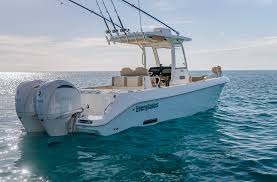While wandering into the universe of floating, it’s basic to fathom fundamental terms to help you convey and investigate safely on the water. Whether you’re a first-time boat owner or an agreeable boater, this guide will familiarise you with the really 20 cruising terms every fledgling should know.
Top 20 Basic Boat Terminology, Bow and Stern
Top 20 Basic Boat Terminology. The bow suggests the front or forward piece of the boat. It’s perhaps of the vitally directional term you’ll insight, as knowing where the bow is portrays various bits of the boat. Converse to the bow, the brutal is the back or back piece of the boat. While alluding to bearing, you’ll regularly hear phrases like “progressing toward the brutal,” and that suggests going to the rear of the vessel.
Port and Starboard
The port side of the boat is the left-hand side while defying the bow (front). A strong trick to recall this is that “port” and “left” both have four letters. Starboard implies the right-hand side while you’re standing up to the bow. This term perceives heading on the boat and is earnest of course.
Helm and Deck
The steerage is the coordinating part of the boat, where the wheel or turner is found. The individual controlling the steerage is regularly insinuated as the helmsman. The deck is the level surface that fills in as the floor of the boat. It’s where people stand, walk, and contribute most of their energy while locally accessible.
Hull and Keel
The edge is the chief body of the boat that floats in the water. It gives softness and constancy and can be either monohull (one casing) or multihull (more than one body, like boats). The fall is a basic part running along the lower part of the boat from bow to unforgiving. It gives sufficiency, helping with holding the boat back from disturbing or spilling.
Draft and Beam
Draft insinuates the significance of the boat’s construction under the waterline. A boat’s draft is fundamental to be aware while investigating shallow waters. The light outflow boat is the width of the vessel at its fastest point. Understanding a boat’s point of support helps in understanding its strength and how much room it needs in limited spaces like harbours.
Cleat and Anchor
Spikes are metal or plastic fittings on a boat to which ropes are tied. They are fundamental for docking and getting the vessel. An anchor is a significant contraption, normally made of metal, used to keep a boat set up by jumping into the seabed. It’s major stuff for ensuring the boat stays fixed.
Fenders and Mooring
Guards are cushions placed on the sides of the boat to hinder injury while securing. They go probably as a support between the boat and the harbour or various vessels. Getting suggests the show secures a boat to a legitimate thing, like a harbour or a float, using ropes or chains. Boats are as often as possible for momentary visits or long stretches accumulating.
Knot and Bilge
In floating, a pack is a unit of speed identical to one nautical mile every hour (generally 1.15 miles every hour). It’s a normal strategy for assessing a boat’s speed in the water. The bilge is the most decreased piece of a boat’s inside, where water will accumulate everyday. A bilge syphon is by and large used to wipe out this water to keep the boat away from flooding.
Buoy and Wake
Floats are floating markers that go to the seabed, often used to show channels, risks, or getting regions. Boaters ought to appreciate float markers to investigate safely. A wake is the disrupting impact or waves made by a moving boat. The greater and speedier the boat, the more noteworthy its wake. Boaters ought to be aware of their wake to do whatever it takes not to agitate others.
Cabin and Transom
The cabin is the encased district of a boat where people can search for cover from the parts. Depending upon the size of the boat, the hotel could contain snoozing quarters, a cookroom (kitchen), or a head (washroom). The transom is the level section at the bottom of the boat. On many boats, the engine is mounted on the transom, and it’s a fundamental piece of the vessel’s overall development.
Conclusion
Top 20 Basic Boat Terminology. Understanding crucial boat states is principal for investigating the water safely and with conviction. These 20 terms structure the foundation of your floating language and will make correspondence more direct, whether you’re chatting with individual boaters or getting rules from a captain. Remember, cruising is as much about security, everything being equal about satisfaction, and feeling good around the boat will simply redesign your experience on the water.


